Medici Money Read online
Medici Money
‘Lucky for Italy that Tim Parks decided to live there and write about his new home. His acute sense of people and history now comes to a grand fruition in his tome on the Medici, a gift to anyone who has been dazzled by Florence. Splendid reading.’ Frances Mayes, author of Under the Tuscan Sun
‘Witty and penetrating … Parks deftly unravels these complexities, illustrating both their benefits and the pitfalls with illuminating detail … [he] recounts the Medicis’ story with an infectious enthusiasm. His own conjuring trick is to tell this grand saga, with all its chicanery, in a clear and lucid style.’ Martin Baker, Sunday Telegraph
‘Parks, who is sceptical about bankers, writes about them with pace, wit and some passion.’ Economist
‘The story-telling is wonderful. Parks brings a novelists flair to his task and comes out as a hip and snappy narrator … wit, elegance and intelligence … He has an infallible eye for interesting anecdote … Medici Money marks a marriage of the banking history of the Medici and the family’s political shenanigans that has never before been attempted … For those who liked to be gripped by the past Tim Parks has surpassed himself and produced a thoroughly readable book on the Medici.’ Independent on Sunday
‘He is master of the historic present, carrying us through events with the excitement of a live observer.’ David, Abulafia, Times Literary Supplement
‘A book which is as lively as it is learned.’ Scotsman
TIM PARKS is the author of eleven novels, including Europa (shortlisted for the Booker Prize), Destiny and Rapids. He has also written three accounts of life in northern Italy, two collections of essays and many translations of Italian writers. He lives in Italy.
ATLAS
The books in the Atlas series will explore entrepreneurship, greed, finance, business, economics – over the centuries.
Published titles
James Buchan
Adam Smith
Rich Cohen
The Record Men:
Chess Records and the Business of Rock & Roll
Tim Parks
Medici Money:
Banking, Metaphysics and Art in Fifteenth-Century Florence
Forthcoming titles
Richard Rayner
California Capitalists:
the ‘Big Four’ and the making of California
BY TIM PARKS
FICTION
NONFICTION
Tongues of Flame
Italian Neighbours
Loving Roger
An Italian Education
Home Thoughts
Translating Style
Family Planning
Adultery and Other Diversions
Juggling the Stars
Hell and Back
Goodness
A Season with Verona
Shear
Medici Money
Mimi’s Ghost
Europa
Destiny
Judge Savage
Rapids
Medici Money
Banking, Metaphysics, and Art in Fifteenth-Century Florence
Tim Parks
This paperback edition published in 2006
First published in Great Britain in 2005 by
Profile Books Ltd
3A Exmouth House
Pine Street
Exmouth Market
London EC1R 0JH
www.profilebooks.com
First published in the United States in 2005 by
Atlas Books/W. W. Norton & Company, Inc.
Copyright © Tim Parks, 2005, 2006
7 9 10 8 6
Printed and bound by CPI Group (UK) Ltd, Croydon, CR0 4YY
The moral right of the author has been asserted.
All rights reserved. Without limiting the rights under copyright reserved above, no part of this publication may be reproduced, stored or introduced into a retrieval system, or transmitted, in any form or by any means (electronic, mechanical, photocopying, recording or otherwise), without the prior written permission of both the copyright owner and the publisher of this book.
A CIP catalogue record for this book is available from the British Library.
ISBN-10 1 86197 757 3
ISBN-13 978 1 86197 757 1
Contents
Medici Family Tree
Chronology
1 With Usura …
2 The Art of Exchange
3 The Rise to Power
4 “The Secret Things of Our Town”
5 Blue Blood and White Elephants
6 The Magnificent Decline
Bibliographic Notes
Illustration Credits
Index
Medici Family Tree
Chronology
1348
The plague kills more than a third of the population of Florence
1378
The revolt of the ciompi (woolworkers’ rebellion)
1389
Birth of Cosimo de’ Medici
1397
Cosimo’s father, Giovanni di Bicci, founds the Medici bank in Florence with a branch in Rome
1400
Branch of the Medici bank opens in Naples
1402
Branch of the Medici bank opens in Venice A Medici wool factory opens in Florence
1406
Florence conquers Pisa
1408
A second Medici wool factory opens in Florence
1410
Baldassarre Cossa elected Pope Giovanni XXIII
1416
Birth of Piero de’ Medici (the Gouty)
1420
Death of Baldassarre Cossa; his tomb is commissioned by Cosimo de’ Medici
Giovanni di Bicci retires, leaving the bank to his son Cosimo
1424
Milanese army routs the Florentines at Zagonara
1426
Branch of the Medici bank opens in Geneva, later transferred to Lyon
1427
Introduction of the catasto, a form of direct taxation
1429
Death of Giovanni di Bicci
War with Milan over Lucca
1433
Branch of the Medici bank opens in Basle
Medici silk factory opens in Florence
September 7, Cosimo de’ Medici arrested and exiled
1434
September 29, Cosimo recalled to Florence
1435
Giovanni Benci becomes director of the Medici holding
1436
Branch of the Medici bank opens in Ancona
Dome of the Florence Duomo completed
1436–43
Restoration of the Monastery of San Marco financed and directed by Cosimo de’ Medici
1437
Christians in Florence banned from all moneylending practices
1438
Ecumenical conference between leaders of the Byzantine and Roman churches, in Florence
1439
Branch of the Medici bank opens in Bruges
1440
Death of Cosimo’s brother, Lorenzo
1442
Branch of the Medici bank opens in Pisa
1443
Closure of the Ancona and Basle branches of the Medici bank
1446
Branches of the Medici bank open in Avignon and London
1449
Birth of Lorenzo de’ Medici (the Magnificent)
1450
Francesco Sforza conquers Milan with the help of Cosimo de’ Medici
1452
Branch of the Medici bank opens in Milan
1453
Fall of Constantinople
1455
Giovanni Benci, director of the Medici holding, dies and the holding is wound up
1458
&nbs
p; Government crisis leads to calling of a parlamento and reinforcement of Medici power
1464
Death of Cosimo
Giovanni Tornabuoni becomes director of the Rome branch of the Medici bank
1465
Tommaso Portinari becomes director of the Bruges branch of the Medici bank
Closure of one Medici wool factory
1466
Piero de’ Medici calls a parlamento and again consolidates Medici power; his son Lorenzo signs a deal with Pope Paul II that gives the bank a monopoly in the alum trade
1469
Death of Piero; his son Lorenzo marries the nobleborn Clarice Orsini; Francesco Sassetti becomes sole director of the Medici bank
1471
Florentine army sacks Volterra
1472
Birth of Piero de’ Medici (the Fatuous)
1476
Assassination of Galeazzo Maria Sforza, duke of Milan, major client of the Medici bank
1477
Death in battle of Charles, duke of Burgundy (le Téméraire), major client of the Medici bank
1478
The conspiracy of the Pazzi. Giuliano de’ Medici, Lorenzo’s younger brother, assassinated; Lorenzo survives; war with Rome and Naples ensues
Closure of the Milan and Avignon branches of the Medici bank
1479
December, Lorenzo goes alone to Naples to negotiate a peace with King Ferrante
1480
Turks raid Otranto on the southeast coast of Italy and take 10,000 people as slaves
Closure of the Bruges and London branches of the Medici bank and of the Medici silk factory
1481
Closure of the Venice branch of the Medici bank
1485
Lionetto de’ Rossi, head of the Lyon branch of the bank, recalled to Florence and arrested for fraudulent bankruptcy
1489
Closure of the Pisa branch of the Medici bank
Lorenzo’s second son, Giovanni di Lorenzo de’ Medici, later Pope Leo X, becomes a cardinal at the age of thirteen
1490
Death of Francesco Sassetti
Savonarola begins his sermons on the apocalypse in the Monastery of San Marco
1492
Death of Lorenzo de’ Medici (the Magnificent)
1494
French invasion; flight of Piero de’ Medici (the Fatuous) and collapse of the bank
Medici Money
1
With Usura …
“With usura,”
wrote Ezra Pound,
“… hath no man a house of good stone
each block cut smooth and well fitting
that design might cover their face.”
By usura, Pound meant usury, or the lending of money at an interest. Not just an exorbitantly high rate of interest, as in the modern usage of the word usury, but any interest at all. He goes on:
“with usura
hath no man a painted paradise on his church wall….
no picture is made to endure nor to live with
but it is made to sell and sell quickly
with usura, sin against nature.”
In the 1920s Pound had come to believe, as many still do, that international banking was a source of great evil. He used the Italian word usura because it was in Italy that the story had begun. During the thirteenth and fourteenth centuries, a web of credit was spun out across Europe, northward to London, east as far as Constantinople, west to Barcelona, south to Naples and Cyprus. At the heart of this dark web of usura lay Florence. But in the same period, and above all in the century that followed, the Tuscan city also produced some of the finest painting and architecture the world has ever seen. Never had stone blocks been cut more smoothly, never were finer paradises painted on church walls. In the Medici family in particular, the two phenomena—modern banking, matchless art—were intimately linked and even mutually sustaining. Pound, it seems, got it wrong. With usura we have the Renaissance, no less.
This book is a brief reflection on the Medici of the fifteenth century—their bank; their politics; their marriages, slaves, and mistresses; the conspiracies they survived; the houses they built and the artists they patronized. The attempt throughout will be to suggest how much their story has to tell us about the way we experience the relationship between high culture and credit cards today, how far it informs our continuing suspicions with regard to international finance and its dealings with religion and politics.
The story is complicated. There are five generations to consider. It’s important to get the main names and dates and the overall trajectory of the thing firmly in the head from the start.
The bank is founded in 1397 and collapses in 1494. Alas, there will be no centenary party. Giovanni di Bicci de’ Medici starts it. That is: Giovanni, son of Bicci (inexplicable nickname for Averardo), of the Medici family. Born in 1360, Giovanni is responsible for the bank’s initial expansion and for establishing a particular Medici style. He keeps his head sensibly down among his flourishing account books before departing this life in 1429. “Stay out of the public eye,” he tells his children on his deathbed.
Cosimo di Giovanni de’ Medici eventually disobeys that order, which is why he will later be reverently known as Cosimo Pater Patriae, Father of His Country. His dates are 1389 to 1464, thus making him the longest lived of our five wealthy men. Having survived brief imprisonment and exile, Cosimo takes the Medici bank to its maximum extension and profitability and moves decisively into politics to the point of more or less running the Florentine Republic. He is a friend to philosophers, architects, and painters; a patron of the arts; and benefactor of major public works. At his death the bank has already entered a decline from which it will never recover.
Piero di Cosimo de’ Medici came to be known as Piero il Gottoso, or Piero the Gouty. Many male members of the Medici family suffered from gout, a hereditary form of arthritis involving painful and ultimately chronic inflammation of the joints. If Piero was the one singled out for the unhappy nickname, it was simply because he didn’t outlive his father long enough to be known for much else. To Piero, however, goes the merit, or blame, of establishing a principle of succession where no succession should have been. Piero was head of the Medici bank by hereditary right, but there was no constitutional reason why he should have taken over from Cosimo as key man in the Florentine state. Frail, bedridden, and bad-tempered, he was nevertheless more determined and effective than his republican enemies. Born in 1416, Piero ran the show for just five years, from 1464 to 1469, before handing over the vast family fortune more or less intact to eldest son Lorenzo in 1469.
Lorenzo was to be known as Il Magnifico. So much for keeping out of the public eye. Just twenty when thrust into the limelight, he puts his eggs in other baskets than finance and commerce, allowing the family bank to slide into now-irretrievable decline. Like his father and grandfather, Lorenzo survives a major conspiracy and shows great skills of political manipulation. Unlike them, he aspires to the aristocracy, writes poetry (good poetry), and barely seeks to disguise a vocation for dictatorship. In 1492, aged forty-three, unable, due to the gout, to visit his portly mistress, Lorenzo finally succumbs to a variety of ailments.
Last of the five, Piero di Lorenzo would all too soon be known as Piero the Fatuous. His father’s artistic achievements and pretensions to nobility proved less transferable as assets than the vast monetary wealth left by his great-grandfather, now drastically diminished. Born in 1472, Piero possessed but one talent, a flair for the game of Florentine football, as a result of which his two years as head of the family were an unhappy parody of his father’s more effective maneuverings. He fled Florence, perhaps unnecessarily, as French troops approached the city in 1494. The family wealth was confiscated, the bank collapsed, and ten years later Piero confirmed his incompetence, or perhaps just bad luck, when he drowned crossing the Garigliano, a river north of Naples.
The trajectory, then, is clear enough. One hundred ye
ars. Five generations. A vertiginous rise of fortune—first economic, then political—in the hands of two most able administrators. A brief hinge period presided over by a grumpy, middle-aged man in bed. Then two and a half decades of political ascendancy predicated on a wealth that is rapidly disappearing. Followed by sudden and complete collapse. To which we might add that despite their different characters, our five Medici have certain traits in common beyond the gout. They were all ugly, Il Magnifico spectacularly so. And they were avid collectors: of sacred relics and ceremonial armor, of manuscripts, of jewels, of cameos. The collecting habit, with its impulse toward control, order, and possession, is akin to the spheres of both banking and art.
WHEN WE THINK of the period that has come to be known as the Renaissance, we think above all of the fifteenth and early sixteenth centuries; we think of the great art and architecture produced then, from Brunelleschi to Michelangelo; and we are aware of the Medici insofar as they had a relation to that art and those artists. Hence we think of them, and above all of Cosimo and Lorenzo, as living in the heyday of early modern times, before which, with the forward-looking exceptions of Dante, Giotto, and Boccaccio, all is darkness. Thus the myth. Yet there is a sense in which the men we are talking about, and particularly Giovanni di Bicci and Cosimo, must have seen themselves rather as coming afterward, of living in the aftermath of something, not the beginning of a golden age.

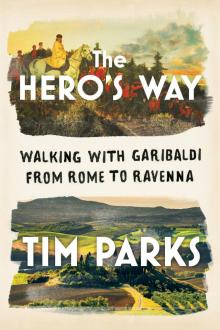 The Hero's Way
The Hero's Way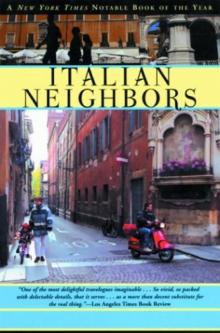 Italian Neighbors
Italian Neighbors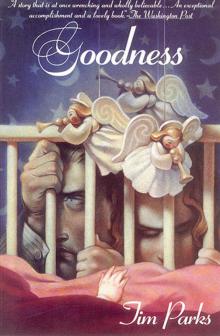 Goodness
Goodness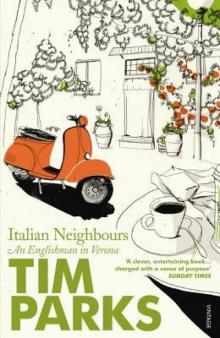 Italian Neighbours_An Englishman in Verona
Italian Neighbours_An Englishman in Verona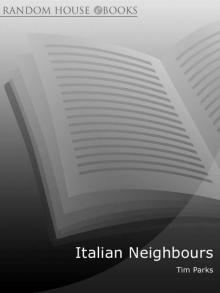 Italian Neighbours
Italian Neighbours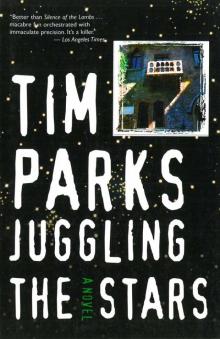 Juggling the Stars
Juggling the Stars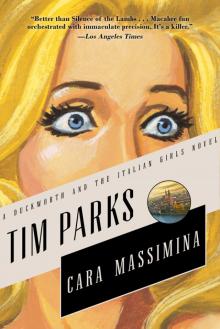 Cara Massimina
Cara Massimina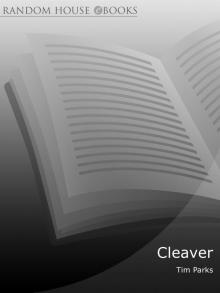 Cleaver
Cleaver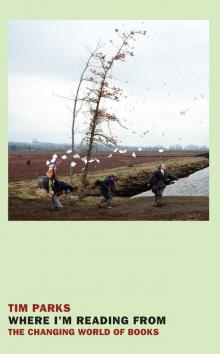 Where I'm Reading From
Where I'm Reading From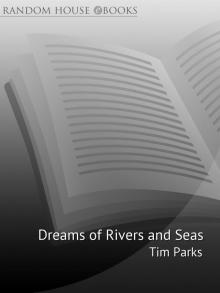 Dreams of Rivers and Seas
Dreams of Rivers and Seas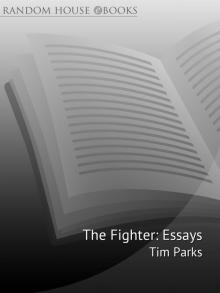 The Fighter
The Fighter In Extremis
In Extremis Painting Death
Painting Death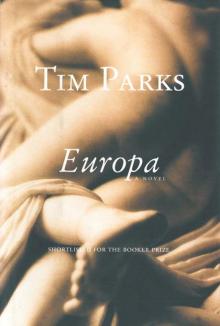 Europa
Europa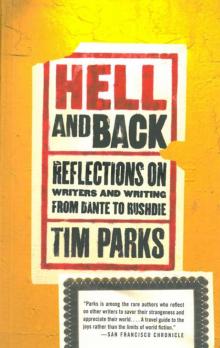 Hell and Back
Hell and Back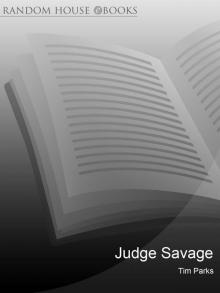 Judge Savage
Judge Savage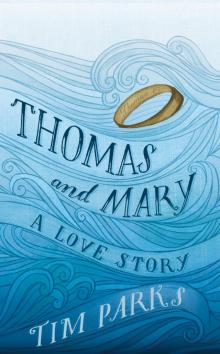 Thomas and Mary
Thomas and Mary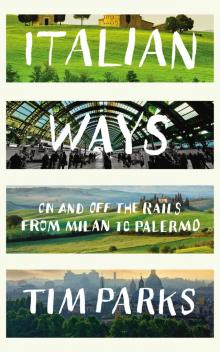 Italian Ways
Italian Ways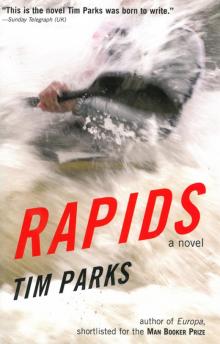 Rapids
Rapids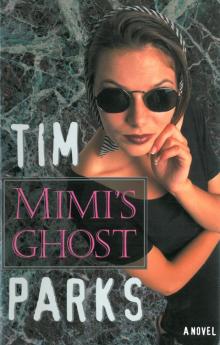 Mimi's Ghost
Mimi's Ghost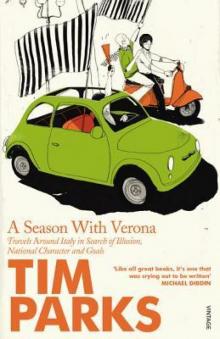 A Season With Verona
A Season With Verona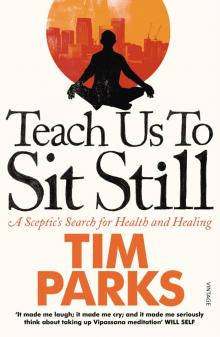 Teach Us to Sit Still
Teach Us to Sit Still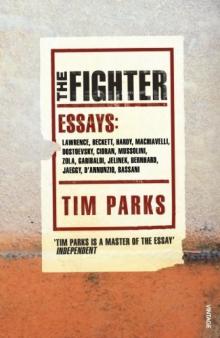 The Fighter_Literary Essays
The Fighter_Literary Essays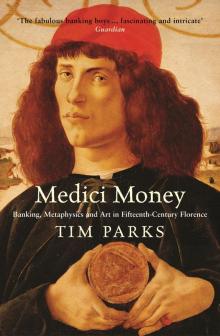 Medici Money
Medici Money